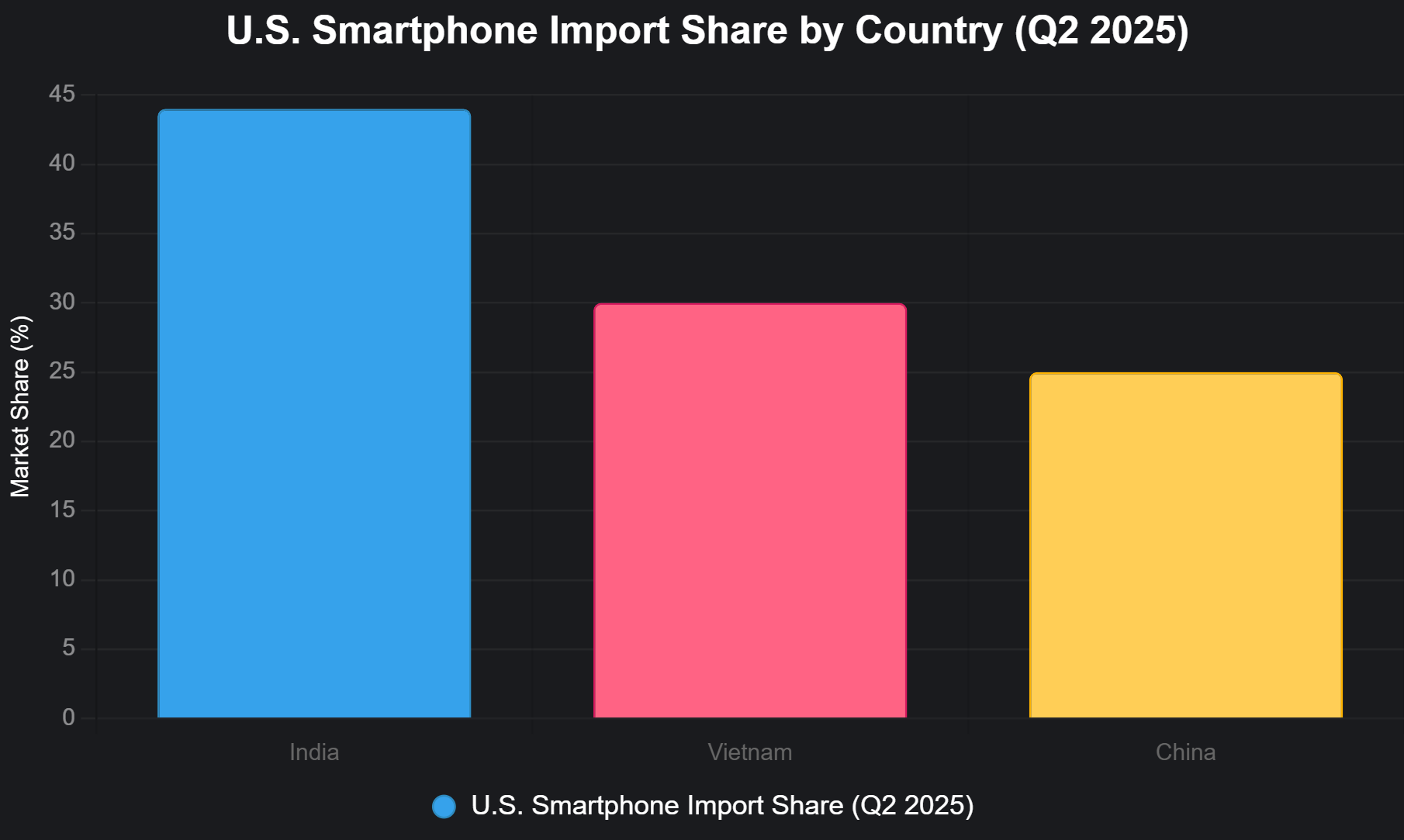India overtakes China in the U.S. smartphone supply chain
India has overtaken China as the top smartphone exporter to the U.S., capturing 44% of imports in Q2 2025. Apple’s movement to India signifies a new era of supply chain diversification, reshaping global tech manufacturing and reducing U.S. reliance on China.

A historic shift in global tech manufacturing
For the first time in history, India has overtaken China as the No. 1 exporter of smartphones to the United States, a milestone that speaks volumes about how geopolitics and business strategy are rewriting the rules of global trade. According to Canalys Research, India-made devices accounted for 44% of U.S. smartphone imports in Q2 2025, up from just 13% a year earlier.
This is more than a reshuffling of numbers. It’s a story of how Apple’s manufacturing pivot to New Delhi, triggered by U.S. tariff pressures and the need for supply chain resilience, has reshaped an industry once synonymous with China. For U.S. consumers, the change may not be visible, an iPhone feels the same whether assembled in Shenzhen or Chennai but it carries real benefits such as fewer shortages, faster product launches, and more stable pricing as production diversifies across hubs.
Why India, why now?
India’s rise didn’t happen overnight. For years, China’s grip on global electronics was unmatched. But cracks began to appear such as rising labor costs, tighter regulations, and escalating U.S.–China tensions made production there increasingly fragile.

India, meanwhile, positioned itself as the natural alternative. With low-cost labor, a young workforce, and government-backed initiatives like “Make in India” and production-linked incentive (PLI) schemes, the country offered both capacity and political alignment with U.S. interests.
The results have been explosive: India’s mobile phone industry has ballooned from ₹18,900 crore in FY2015 to ₹5,45,000 crore in FY2025, with exports crossing ₹2 lakh crore, cementing the country as the world’s second-largest phone maker.
For Apple, this isn’t just diversification, it’s a strategic bet. The company plans to make a quarter of all iPhones in India within the next few years, a shift that could permanently tilt the balance of power in smartphone production.
Lessons for business leaders
The message for business executives is clear, supply chain diversification is no longer optional, it’s a competitive advantage. Apple’s pivot to India shows that the most successful companies are those that act early, spreading their risk while gaining new efficiencies.
This is where Rwazi’s real-time market intelligence becomes invaluable. By tracking consumer demand and supply chain trends across 190+ countries, Rwazi provides companies with the visibility they need to adapt in real time. CEOs can use these insights make confident, data-driven decisions that strengthen resilience and reduce risk. In an era of constant disruption, agility powered by intelligence is no longer just a strength, it’s survival.





